不同温度和应变速率下7022铝合金流变应力行为
汪洪峰 左敦稳 黄铭敏 陈明和 缪 宏
(南京航空航天大学机电学院,南京,210016,中国)
INTRODUCTION
At the present time,the reduction in weight is of vital importance in vehicle design,especially for aircrafts in aerospace manufacturing.Because of its some excellent performances,such as small density,light weight,high specific strength,good electrical and thermal conductivity,and good corrosion resistance,the aluminum alloy is more widely applied to aerospace manufacturing[1-6].
In recent years,much attention has been paid to the numerical simulation technology in the field of aluminum alloy processing[7-10].In order to ensure the accuracy of simulation,the accurate flow stress of aluminum alloy is urgently needed.Since the flow stress of aluminum alloy is relevant to the heating temperature and the strain rate,it is of great importance to get the constitutive equation of the strain and the stress.
Mechanical properties of 7022 aluminum alloy at the temperature can be accessed from the suppliers,but its mechanical properties at the high temperature are rarely reported.In this paper,the flow stress of 7022 aluminum alloy is established by high temperature tension test,and the corresponding constitutive equation between the stress and the strain is built.
In the present work,high temperature tension test is performed for 7022 aluminum alloy sheet at various strain rates(0.001-0.1 s-1)at a wide range of test temperature(293-773 K).Based on the experimental results,the effects of the temperature and the strain rate on the flow stress in the high temperature tension test of the alloy are discussed.
1 EXPERIMENT
7022 aluminum alloy sheets of 1 mm thickness are used for experiments.The chemical composition of the alloy is given in Table 1.

Table1 Chemical compositions of specimen %
Tension tests are performed at a wide range of strain rates(0.001,0.01 and 0.1 s-1)by uni-versal high-temperature tensile testing machine.The testing temperatures are 293,373,473,573,673 and 773 K.The sizes of specimens are shown in Fig.1.
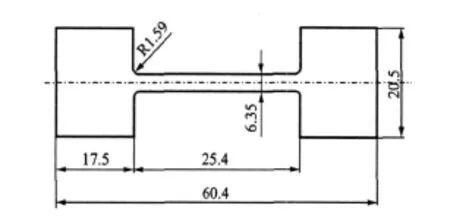
Fig.1 Geometry size of specimen of high temperature tension
Firstly,the temperature of heating furnace is increased to a predetermined temperature before putting the specimen into the furnace,then the temperature is kept the predetermined temperature for 20 min,then the tension tests are carried out and the relevant data are recorded.
2 EXPERIMENTAL RESULTS AND DISCUSSION
2.1 Deformation characteristics in uniaxial tension tests
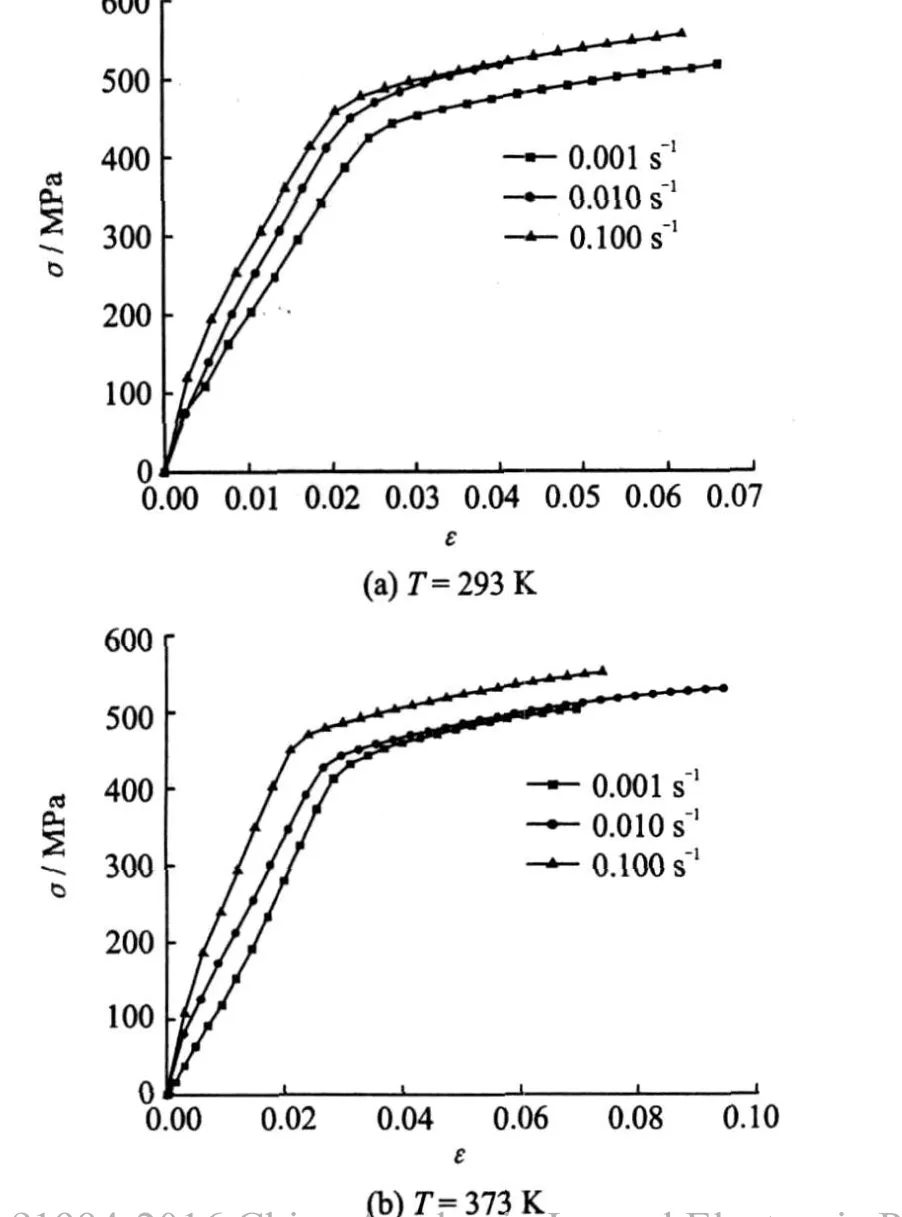
Figs.2(a)-(f)show the stress-strain curves(nominal stress versus nominal strain)at various temperatures and strain rates.At the same strain rate,the flow stress decreases with temperature increasing.This phenomenon can be attributed to the effects of the temperature on the deformation resistance.At the same temperature,the flow stress increases with strain rate increasing.This phenomenon can be attributed to insufficient time for adequate softening of material at the larger strain rate.7022 aluminum alloy is severely softened after yielding at the high temperature of 673-773 K,so it is not heat resistant aluminum alloy.In the aluminum alloy preparation process,the second phase is related with the high temperature thermal stability,and it cannot effectively prevent the crystal grain growth.
Fig.3 shows the fracture elongation as a function of temperature at various tested strain rates.At the same strain rate,the fracture elongation becomes considerably larger with temperature increasing.At the same temperature,the fracture elongation becomes considerably larger with strain rate decreasing.The elongation reaches up to its maximum value at the strain rate of 0.001 s-1and the temperature of 773 K.This may be because of the heating effect during the deformation, which means that induration is avoided since the deformation time is long and the size of stretching sample is so thin for fast heat exchanging.The high elongation may be also the result of fast deformation exchanging in high temperature atmosphere,or the restarting of dislocation climbing.
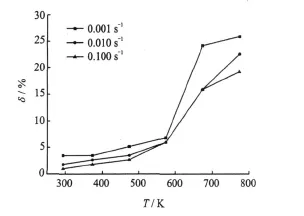
Fig.3 Variation of elongation with temperature and strain rate of 5050
2.2 Constitutive model
Equations that describe changes in the flow stress are usually divided into two groups.The first group comprises models that directly describe the changes in the flow stress of material depending on the tensile conditions,such as temperature and tensile rate.The second group embraces models in which the tensile history affects the internal state of material,determined primarily by its structure,and in which the actual response of the material to the tensile conditions depends on its internal state.
Based on Refs.[11-12], the Grosman equation of the first group is employed in the paper.The model of stress-strain in the drawing process is established according to revised Hooke law and Grosman equation.

where ee is the stress in elastic stage,ep the stress in plastic stage,and m the sensitivity coefficient of strain rate.C and E are the material coefficients,n and n1the coefficients of strain hardening.In Eq.(1),C,E,n,n1and m are constants under a certain temperature and strain rate,but at different temperatures and strain rates they are variable.Considering the temperature and strain rate effects,the above-mentioned four factors must be amended.
(1)Amendment of E value
In Eq.(1),E is the quadratic function of temperature T and strain rateFigs.4(a)-(f)show the curves of the linear fit of the elastic stage at different temperatures and strain rates.The slope of a straight line is E value at a certain temperature and strain rate.The E values are fitted by least square method of Matlab software.The fitting graphics are shown in Fig.5.The fitting formula is
(2)Amendment of n,n1,m and C values
In Fig.4(a)-(f),three groups of datas are extracted from each curve,and every group of data is composed of four pairs of data,which are substituted into plastic stage of Eq.(1),in which n,n1,C and m values are obtained.The averaging for n,n1,C andm values of three groups of the same curve is obtained.The above n,n1,C and m values are fitted by least square method of Matlab software. The fitting graphics are shown in Figs.6(a)-(d).The fitting formulas are
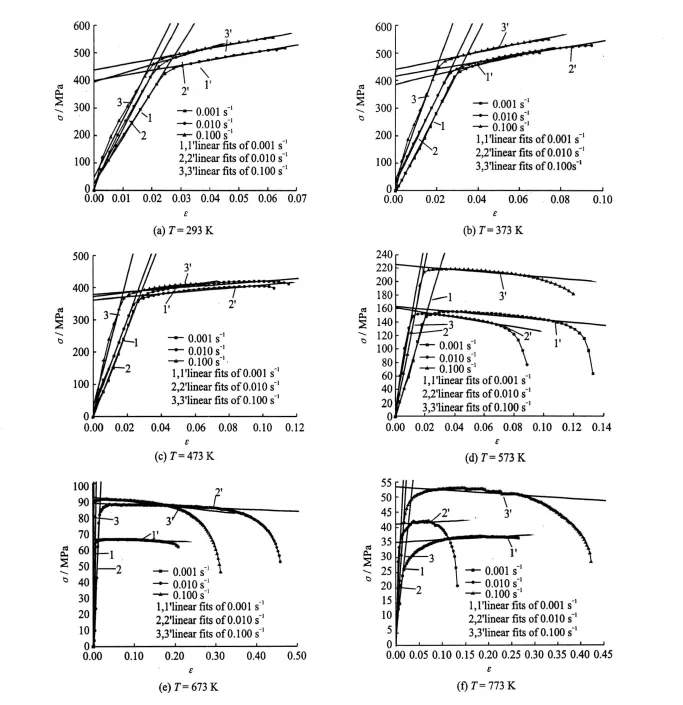
Fig.4 Fitting curves of stress-strain of elastic and plastic stage at each temperature and strain rate(1,2,3 linear fits of elastic stage;1′,2′,3′linear fits of plastic stage)
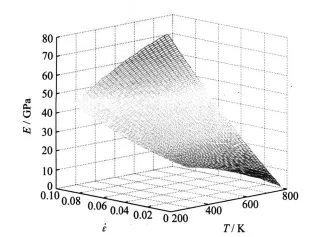
Fig.5 Relation of E,T and X·
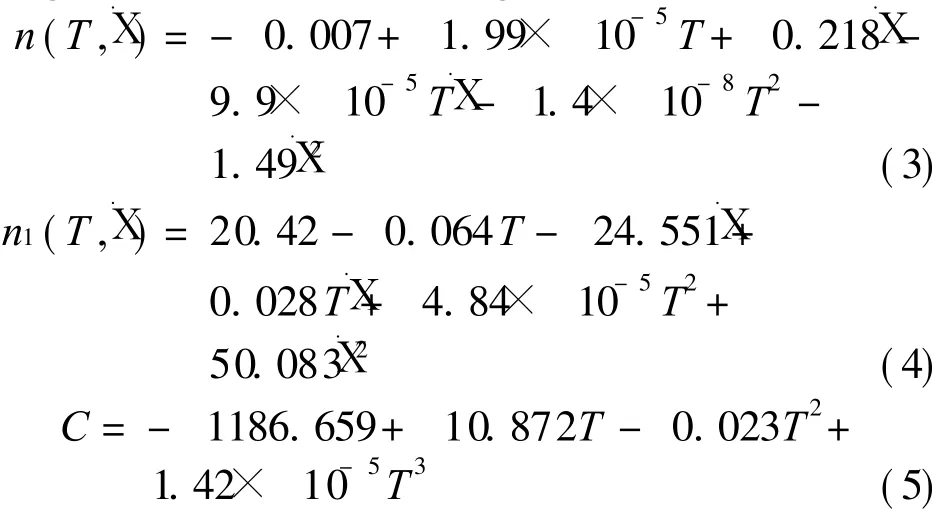

The influence of strain rate on C and m is very slight from calculating,so C and m are the only considering factors related to the temperature.
2.3 Comparison of model and measured curves
It can be seen from Figs.7(a-b)that the calculated curves agree well with the measured curves in the elastic stage.And at the beginning of the plastic stage,the two curves are close to the trends and numerical values.The maximum error between the calculated value and the experimental value isabout40%. Therefore,the stress-strain model of 7022 aluminum alloy is closer to the inherent properties of the material itself.This model is mainly used in welding and hot stamping simulation process.
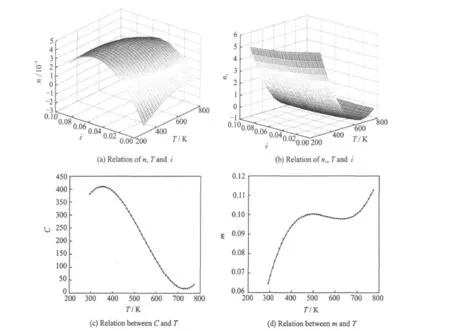
Fig.6 Fitting curves of value of each parameter

Fig.7 Comparison between calculated values and experimental values
3 CONCLUSIONS
(1)The tensile tests of 7022 aluminum alloy sheet are carried out at various temperatures(293-773 K)and strain rates(0.001-0.1 s-1).It is found that 7022 aluminum alloy is severely softened after yielding at the high temperature of 673-773 K.
(2)By taking revised equations of Hooke law and Grosman,the high-temperature tensile constitutive equation of 7022 aluminum alloy sheet is obtained.The curve trend and the calculated value of the model agree well with the actual measured value in the elastic and plastic stages.
(3)Constitutive equations of 7022 aluminum alloy obtained from this study can provide elastic modulus and stress-strain at different temperatures and strain rates,which are necessary for its processing simulation.7022 aluminum alloy can be considered in the softening stage at the temperature higher than 673 K,at the moment,elastic modulus and the stress-strain of the alloy are regarded as zero on the finite element analysis.
[1] CavaliereaP,Squillace A,PanellaF. Effect of welding parameters on mechanical and microstructural properties of AA6082 joints produced by friction stir welding[J].Journal of Materials Processing Technology,2008(200):364-372.
[2] Dongun Kim,Harsha Badarinarayan,Ji Hoon Kim,et al.Numerical simulation of friction stir butt welding process for AA5083-H18 sheets[J].European Journal of Mechanics A/Solids,2009(1):1-12.
[3] Jariyaboon M,Davenport A J,Ambat R,et al.The effect of welding parameters on the corrosion behaviour of friction stir welded AA2024-T351[J].Corrosion Science,2007(49):877-909.
[4] Tetsuo Naka,Fusahito Yoshida.Deep drawability of type5083aluminium-magnesium alloy sheet under various conditions of temperature and forming speed[J].Journal of Materials ProcessingTechnology,1999(89-90):19-23.
[5] Cavaliere P,De Santis A,Panella F,et al.Effect of welding parameters on mechanical and microstructuralpropertiesofdissimilar AA6082— AA2024 joints produced by friction stir welding[J].Materials and Design,2009(30):609-616.
[6] Cai Yiming,Li Huizhong,Liang Xiaopeng,et al.Thermal deformation behavior for7039aluminum alloy at elevated temperature[J].The Chinese Journal of Nonferrous M etals,2008,18(10):1775-1780.(in Chinese)
[7] Serkan Toros,Fahrettin Ozturk,Ilyas Kacar.Review of warm forming of aluminum-magnesium alloys[J].Journal of Materials Processing Technology,2008,207:1-12.
[8] Rodrigues D M,Loureiro A,Leitao C,et al.Influence of friction stir welding parameters on the microstructural and mechanical properties of AA 6016-T4thin welds[J].Materials and Design,2009(30):1913-1921.
[9] Ceschini L,Boromei I,Minak G,et al.Effect of friction stir welding on microstructure,tensile and fatigue properties of the AA7005/10 vol.%Al2O3pcomposite[J].Composites Science and Technology,2007(67):605-615.
[10]Carter Hamilton,Stanisl/aw Dymek,Marek Blicharski. A model of material flow during friction stir welding[J].Materials Characterization,2008(59):1206-1214.
[11]Yang Changyong,Xu Jiuhua,Ding Wenfeng,et al.Effects of rare earth element lanthanum on microstructure and properties of Ag-Cu-Ti solider alloy[J].Transactions of Nanjing University of Aeronautics& Astronautics,2008,25(3):230-234. (in Chinese)
[12]Gronostajski Z.The constitutive equations for FEM analysis[J].Journal of Materials Processing Technology,2000,106:40-44.
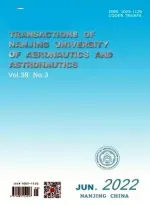 Transactions of Nanjing University of Aeronautics and Astronautics2010年3期
Transactions of Nanjing University of Aeronautics and Astronautics2010年3期
- Transactions of Nanjing University of Aeronautics and Astronautics的其它文章
- 考虑不确定性因素的多学科设计优化方法
- 基于变换空间近邻图的自助型局部保持投影
- 纳米TiC粉末改性钎料钎焊CBN磨粒的结合界面和磨损特性
- TRANSACTIONS OF NANJING UNIVERSITY OF AERONAUTICS&ASTRONAUTICS
- 局部Bagging方法及其在人脸识别中的应用
